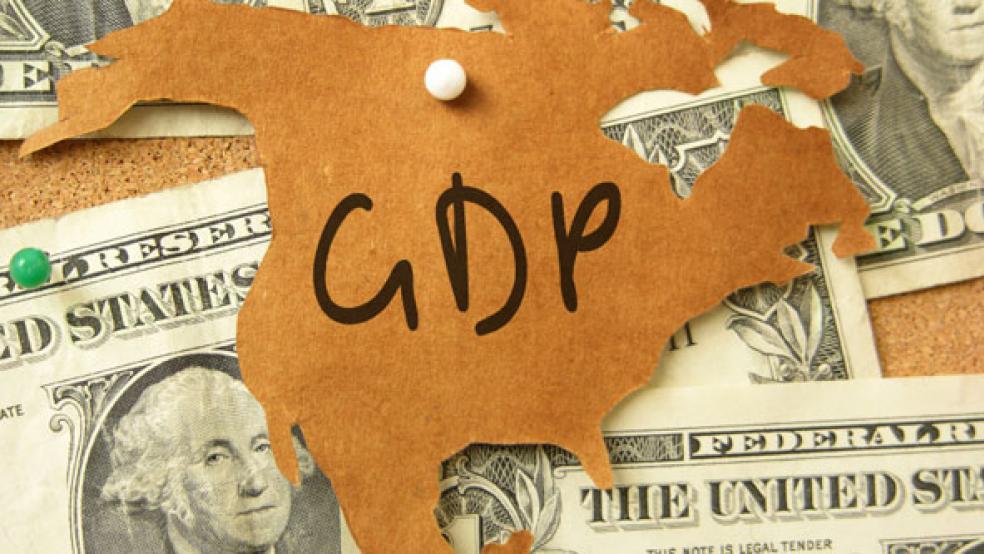Economists drew a collective sharp breath Tuesday morning, when the Commerce Department announced that it measured first quarter growth in the U.S. economy at a sickly 0.1 percent annualized rate. The expectation had been that growth would clock in at 1.2 percent, so the figure came as a disappointment to many.
Consumer spending was up three percent in the quarter, driven in large part by a 9.9 percent increase in health care spending, much of which was attributable to the large numbers of people who gained and used health insurance when the Affordable Care Act became effective. On the downside, business investment declined, as did government spending.
Related: Unemployment Shows We’re Getting Worse at Economic Recovery
However, many economists and analysts pointed out that the data is both preliminary and heavily influenced by the effects of an unusually severe winter, and probably doesn’t reflect economic growth moving forward.
“It's important to note that GDP for this initial estimate is compiled from the earliest data available for the quarter, which is when the weather effects were greatest,” said Diane Swonk, chief economist for Mesirow Financial. “Indeed, final sales came in closer to our initial read that growth would be closer to 1.0 percent, which means that underlying demand is better than the headline number suggests.”
Exports of goods and services dropped 7.6 percent, compared to an increase of 9.5 percent in the previous quarter, as weakness in foreign economies took its toll.
Paul Ashworth, chief economist for Capital Economics, predicted that the lackluster first quarter actually sets up the economy for a particularly strong second quarter. “As the weather has returned to seasonal norms, we have already seen a marked improvement in the monthly data for March, which suggests that there will be a big rebound in second-quarter GDP growth,” he wrote.
The White House Council of Economic Advisers immediately moved to downplay the significance of the report’s headline number by noting the weather effects and the positive trends in a number of areas, including increases in light vehicle sales, average weekly hours worked and core retail and food service sales.
Related: Tracking Federal Spending May Get a Lot Easier
But opponents of the administration were just as quick to use the report as an indictment of President Obama’s handling of the economy.
“Today’s news should be a wakeup call for the leaders in Washington — the status quo isn’t working,” said Rep. Dave Camp (R-MI), chairman of the House Ways and Means Committee. “With economic growth almost at a standstill, it is no surprise that only 27 percent of Americans believe the country is heading in the right direction. “The Administration’s and the Democrat-controlled Senate’s refusal to seriously engage on policies that will create jobs and economic growth is inexcusable.”
Top Reads from The Fiscal Times





